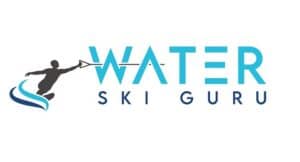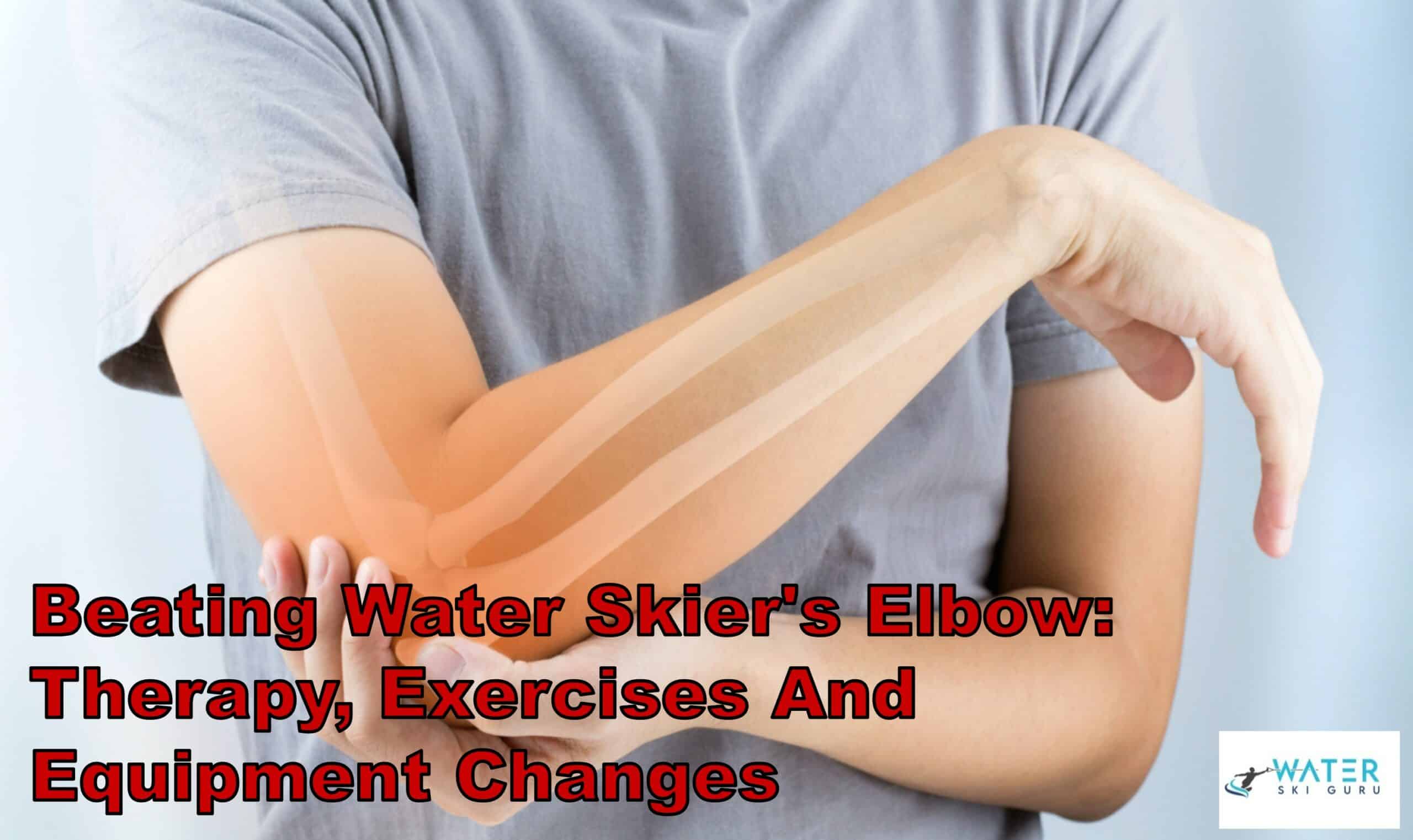Are you tired of feeling like a one-armed bandit after a day on the water? Do you dread the throbbing pain that creeps up your arm after each skiing session? Well, fear not my fellow skiers, for I have found the solution to beating water skier’s elbow: therapy, exercises, and equipment changes.
As someone who has experienced the agony of tendinitis and overuse firsthand, I can attest to the fact that rest alone is not enough. I’ve tried icing, compression, and immobilization, but the pain always seems to return. That’s why I’ve delved deeper into the issue and found that an active approach is necessary to alleviate or even eliminate the pain.
In this article, we will explore the causes of elbow pain, equipment choices for relief, and specific recommendations for treatment. Let’s take control of our elbow health and get back to the sport we love with confidence.
Causes of Elbow Pain
I’ve learned that elbow pain in water skiers is often caused by tendinitis from overuse or inflammation of the tendons connecting muscles to bones. Preventive measures are essential to avoid this condition, and it’s essential to debunk common misconceptions about it.
Rest alone isn’t enough to solve the problem, and an active approach is necessary. Therapy, exercises, and equipment changes are the best ways to alleviate or eliminate pain.
One common misconception is that larger diameter handles are always better. While a larger handle can help relax forearms and reduce pressure, it’s not always the best option. Choosing a radius handle can also take pressure off the elbows. It’s important to try different sizes and shapes to find the one that works best for you.
Snug fitting gloves with maximum grip can help avoid over-gripping the handle, but it’s essential to avoid bunching of skin in hands leading to blisters and tears. Mixing things up can help reduce tendinitis problems, and seeking medical advice is necessary if the pain persists.
Equipment Choices for Relief
It’s almost comical how something as simple as choosing the right handle size or glove can make all the difference in relieving elbow pain while water skiing.
One of the most effective equipment choices for alleviating elbow stress is opting for larger handle options. This can help relax the forearms and reduce the pressure on the elbows. Additionally, using a radius handle can also take the pressure off the elbows.
Another important factor is the choice of gloves. Snug fitting gloves with maximum grip can help avoid over-gripping the handle, which is a common cause of tendinitis. Pro Lock Gloves with a strap and dowel system can help grip better while relaxing the forearms.
It’s also worth noting that Masterline offers handles in many diameters ranging from .888 to 1.183, and their Custom Series of Handles offers variety in size and shape. Mixing things up can help reduce tendinitis problems and provide relief to water skiers experiencing elbow pain.
Specific Recommendations for Treatment
One effective method for relieving elbow pain while water skiing is to investigate the triceps if experiencing pain on the inside of the palm-up elbow. Tight triceps can cause strain on the tendon and exacerbate tendinitis. To alleviate this strain, it’s recommended to work on loosening and stretching the triceps.
Here are some specific recommendations:
- Incorporate triceps stretches into your warm-up and cool-down routines
- Use a foam roller to massage and release tight triceps muscles
- Consider working with a physical therapist or personal trainer to develop a triceps strengthening program
- Combine triceps exercises with weight loss recommendations to reduce overall stress on the elbow joint.
In addition to investigating the triceps, weight loss can also be an effective way to alleviate elbow stress while water skiing. Extra weight can put unnecessary strain on the elbow joint, exacerbating tendinitis and other forms of elbow pain. By losing weight, you can reduce the overall stress on your joints and make it easier to maintain good form and technique while skiing.
Consider working with a nutritionist or personal trainer to develop a weight loss plan that’s safe and sustainable for you.
Frequently Asked Questions
How long does it typically take to recover from water skier’s elbow?
Rehabilitation duration for water skier’s elbow varies based on severity and adherence to treatment. Recovery timeline can range from weeks to months, with exercises, therapy, and equipment changes being the most effective methods.
Can water skier’s elbow be prevented with proper technique?
Proper technique and training methods can prevent water skier’s elbow. Avoid over-gripping the handle, choose the right equipment, and mix up your routine. Seek medical advice if necessary. Stay healthy and enjoy the sport.
Are there any dietary changes that can help alleviate elbow pain?
Dietary changes and natural remedies have not been proven to alleviate elbow pain in water skiers. Instead, active approaches such as therapy, exercises, and equipment changes are recommended. Seek medical advice for severe cases.
What is the success rate of Graston and ART therapies for treating tendinitis?
Wondering about the success rate of Graston and ART therapies for tendinitis? Both have been shown to improve recovery timelines, with some patients reporting significant relief after just a few sessions.
Are there any supplements or medications that can help with elbow pain?
Supplements and medications may provide temporary relief for elbow pain, but alternative treatments and stretching techniques are more effective in the long term. Consult with a medical professional before taking any supplements or medications.
Conclusion
In conclusion, water skier’s elbow can be a painful and frustrating condition to deal with, but relief is possible with the right therapy, exercises, and equipment changes. It’s important to understand the causes of elbow pain and make appropriate choices in equipment to reduce stress on the joints. Seeking the advice of experts in the field can be helpful in making these decisions.
Taking an active approach to treatment, rather than simply resting, can lead to more effective and long-lasting relief of symptoms. So, if you’re experiencing elbow pain from water skiing, don’t let it keep you off the water. With the right care and attention, you can get back to enjoying this thrilling activity.
And remember, the key to beating water skier’s elbow is to stay informed, stay proactive, and stay on the water. How’ll you take charge of your recovery?

